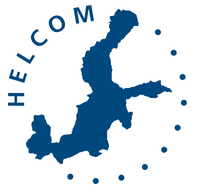Eutrophication
Eutrophication is one of the main threats to the biodiversity of the Baltic Sea and is caused by excessive inputs of nutrients to the marine environment.
Eutrophication is driven by a surplus of the nutrients nitrogen and phosphorus in the sea. Nutrient over-enrichment causes elevated levels of algal and plant growth, increased turbidity, oxygen depletion, changes in species composition and nuisance blooms of algae.
HELCOM strives to achieve the Baltic Sea Action Plan goal of:
A Baltic Sea unaffected by eutrophication.
Eutrophication, or increase in the supply of organic matter to an ecosystem through nutrient enrichment, is induced by excessive availability of nitrogen and phosphorus for primary producers (algae, cyanobacteria and benthic macrovegetation).
Its early symptoms are enhanced primary production, which is expressed through increased chlorophyll-a concentrations in the water column and/or the growth of opportunistic benthic algae, as well as changes in the metabolism of organisms. The increased primary production may lead to reduced water clarity and increased deposition of organic material, which in turn increase oxygen consumption at the seafloor and may lead to oxygen depletion. These changes may in turn affect species composition and food web interactions.
Inputs of nitrogen and phosphorus have been increasing for a long time in the Baltic Sea, mainly between the 1950s and the late 1980s, causing eutrophication symptoms of increasing severity to the ecosystem. As a response to the deteriorating development, actions to reduce nutrient loading were agreed on by the 1988 HELCOM Ministerial Declaration, and reaching a Baltic Sea unaffected by eutrophication is included as one of the main goals of the Baltic Sea Action Plan (BSAP).
Several HELCOM eutrophication assessments have been carried out since the agreement of the Baltic Sea Action Plan, to follow-up on the status of eutrophication of the Baltic Sea. The most recent assessment on eutrophication covers the situation during years 2011-2016.

